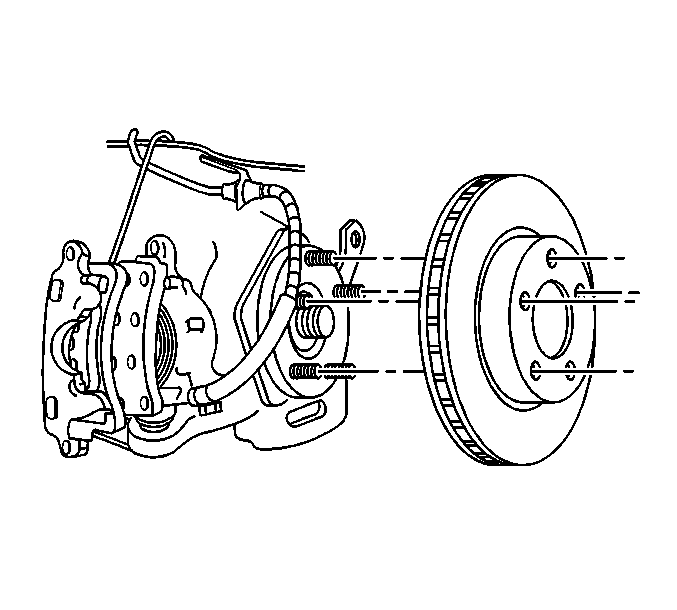For 1990-2009 cars only
Tools Required
| • | J 41013 Rotor Resurfacing Kit |
| • | J 42450-A Wheel Hub Resurfacing Kit |
Caution: Refer to Brake Dust Caution in the Preface section.
Removal Procedure
- Raise and support the vehicle. Refer to Lifting and Jacking the Vehicle in General Information.
- Remove the tire and wheel assembly. Refer to Tire and Wheel Removal and Installation in Tires and Wheels.
- Install a C-clamp over the body of the brake caliper, with the C-clamp ends against the rear of the caliper body and the outboard disc brake pad.
- Using the C-clamp, compress the piston into the caliper bore just enough to allow the caliper to slide away from the rotor.
- Remove the C-clamp.
- Remove the brake caliper and bracket from the vehicle, support the caliper assembly away from the rotor. Refer to Rear Brake Caliper Bracket Replacement .
- Mark the relationship of the rotor to the hub.
- Remove the brake rotor.

Notice: Support the brake caliper with heavy mechanic wire, or equivalent, whenever it is separated from its mount and the hydraulic flexible brake hose is still connected. Failure to support the caliper in this manner will cause the flexible brake hose to bear the weight of the caliper, which may cause damage to the brake hose and in turn may cause a brake fluid leak.
Installation Procedure
- Use the J 42450-A , thoroughly clean any rust or corrosion from the mating surface of the hub/axle flange.
- Use theJ 41013 , thoroughly clean any rust or corrosion from the mating surface and mounting surface of the brake rotor.
- Inspect the mating surfaces of the hub/axle flange and the rotor to ensure that there are no foreign particles or debris remaining.
- Install the brake rotor to the hub/axle flange. Use the matchmark made prior to removal for proper orientation to the flange.
- Install the brake caliper and bracket assembly. Refer to Rear Brake Caliper Bracket Replacement .
- Install the tire and wheel assembly. Refer to Tire and Wheel Removal and Installation in Tires and Wheels.
- Lower the vehicle.
- If the brake rotor was refinished or replaced, or if new brake pads were installed, burnish the pads and rotors. Refer to .
Important: Whenever the rotor has been separated from the wheel bearing flange, clean any rust or contaminants from the wheel bearing flange and the brake rotor mating surfaces. Failure to do this may result in increased lateral runout of the brake rotor, and brake pulsation.

